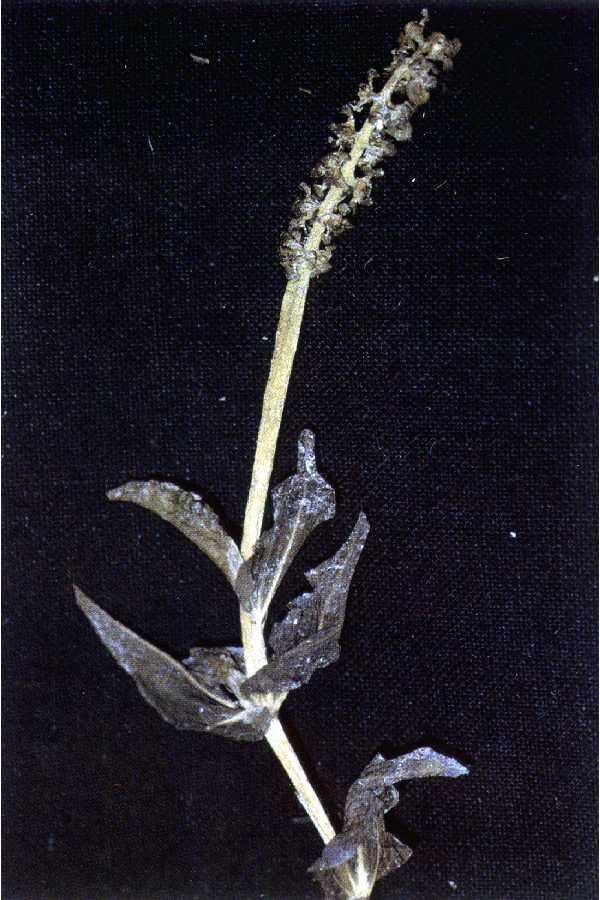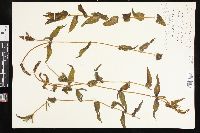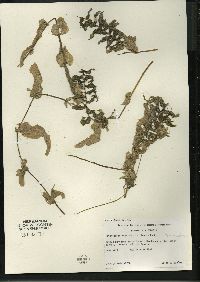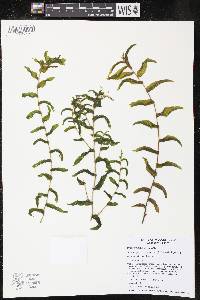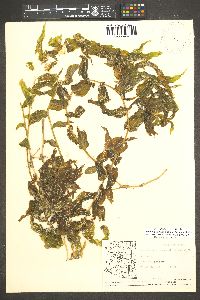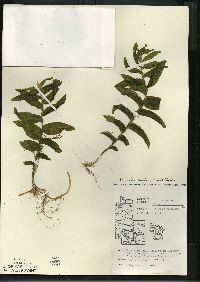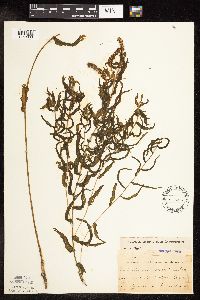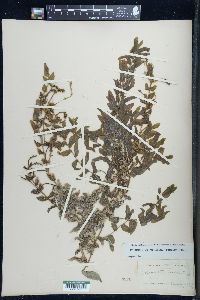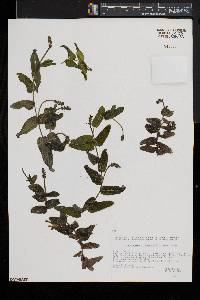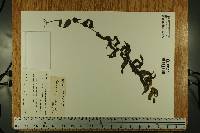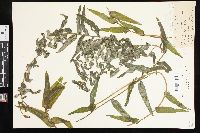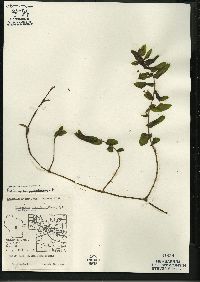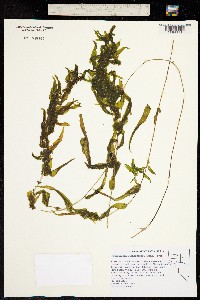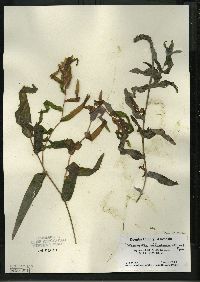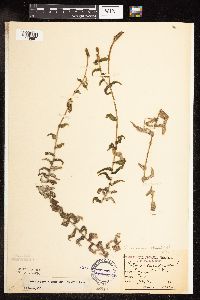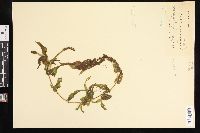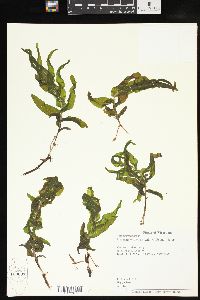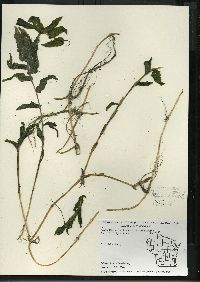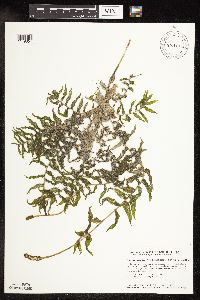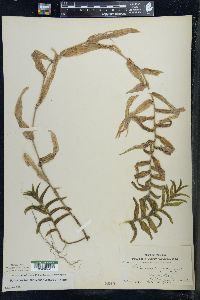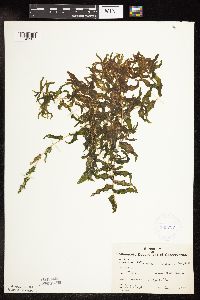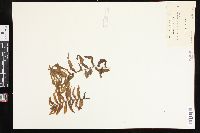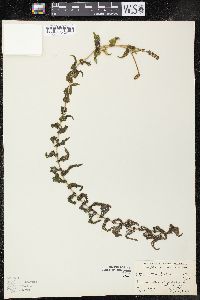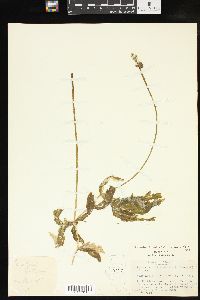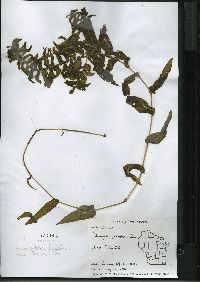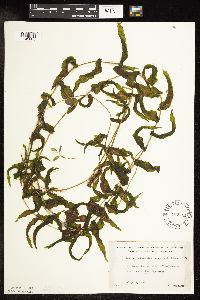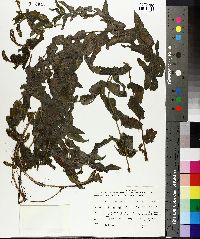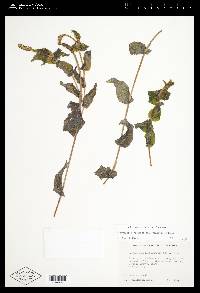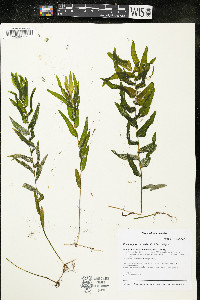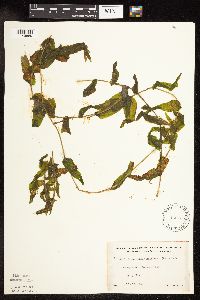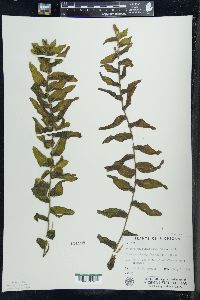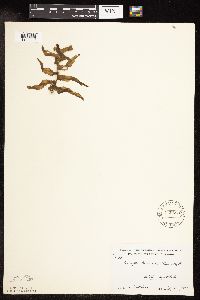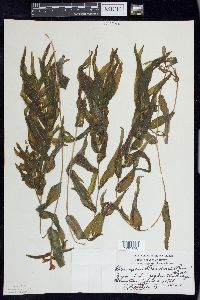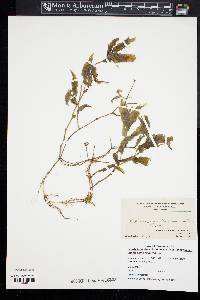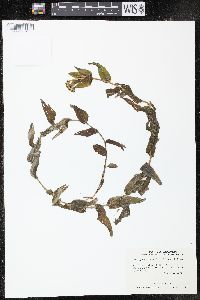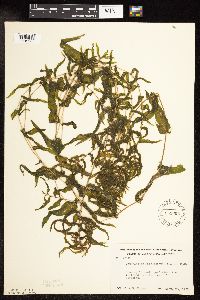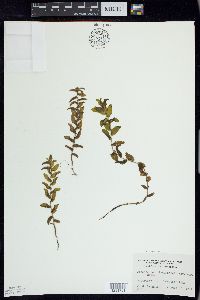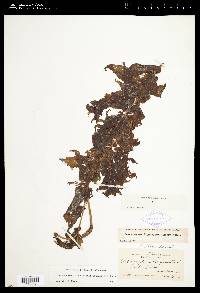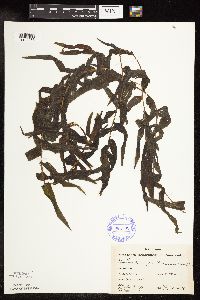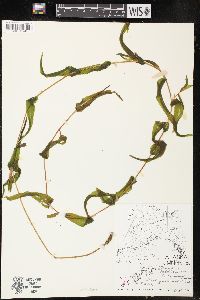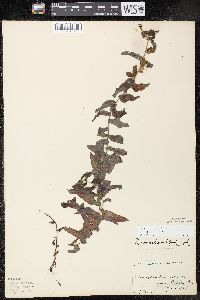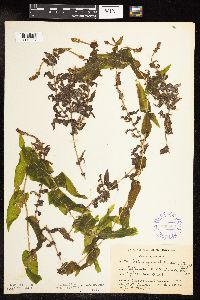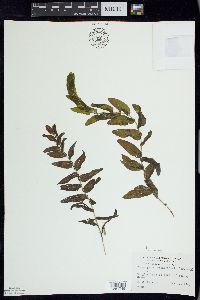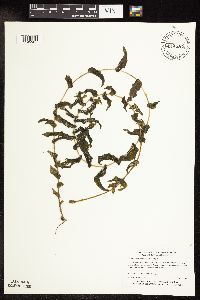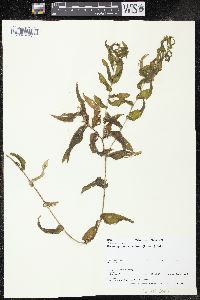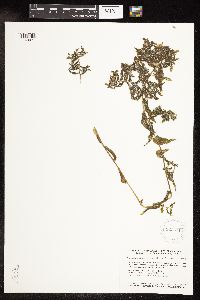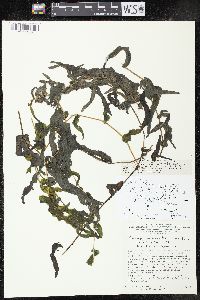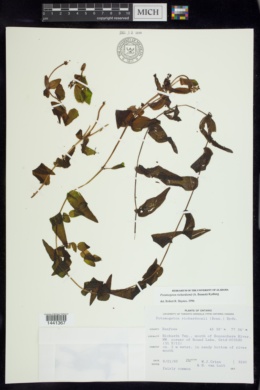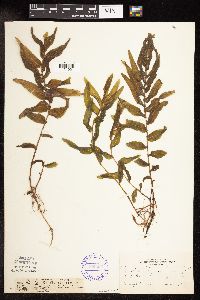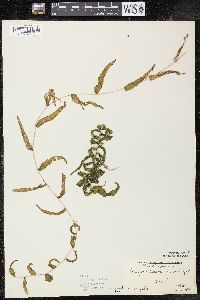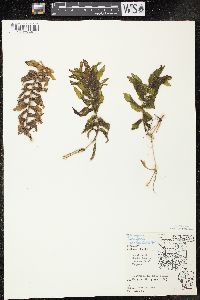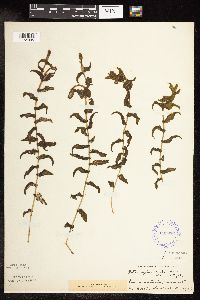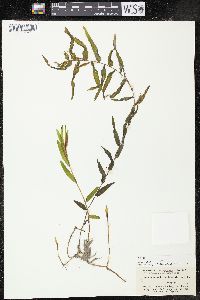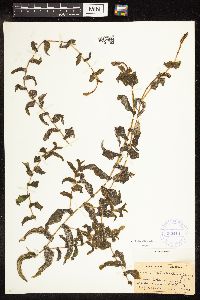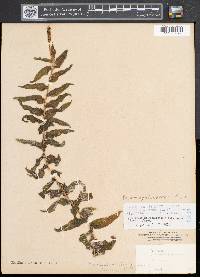Potamogeton richardsonii
|
|
|
|
Family: Potamogetonaceae
Red-Head Pondweed, more...Richardson's pondweed, Richardson pondweed
[Potamogeton perfoliatus subsp. richardsonii (Benn.) Hultén, morePotamogeton perfoliatus var. richardsoni A. Benn., Potamogeton perfoliatus var. richardsonii Benn., Potamogeton richardsoni (A. Benn.) Rydb.] |
Rhizome present. Cauline stems terete, without spots, to 100 cm; nodal glands absent. Turions absent. Leaves submersed, ± spirally arranged, sessile, lax; stipules persistent, conspicuous, convolute, free from blade, white, not ligulate, 0.12--0.17 cm, fibrous, disintegrating to persistent fibers, even on proximal portion of stem, shredding at apex, apex obtuse; blade olive green, ovate-lanceolate to narrowly lanceolate, not arcuate, 1.6--13 cm ´ 5--28 mm, base rounded, without basal lobes, clasping, margins entire to crispate, apex not hoodlike, not splitting when pressed, acute to obtuse, lacunae absent; veins 3--35. Inflorescences emersed, unbranched; peduncles not dimorphic, terminal or axillary, erect to rarely recurved, clavate, 1.5--14.8 cm; spikes not dimorphic, cylindric, 13--37 mm. Fruits sessile, greenish brown, obovoid, turgid to concave, not or rarely abaxially keeled, not laterally keeled, 2.2--4.2 ´ 1.7--2.9 mm; beak erect, 0.4--0.7 mm; sides without basal tubercles; embryo with 1 full spiral. 2n = 52. Flowering summer--fall. Alkaline waters of lakes, streams, and rivers; 0--3000 m; Alta., B.C., Man., N.B., N.W.T., N.S., Ont., Que., Sask., Yukon; Alaska, Calif., Colo., Conn., Idaho, Ill., Ind., Iowa, Maine, Mass., Mich., Minn., Mont., Nebr., Nev., N.H., N.Y., N.Dak., Ohio, Oreg., Pa., S.Dak., Utah, Vt., Wash., Wis., Wyo. Potamogeton richardsonii is quite similar to P. perfoliatus. Specific characteristics to separate the two species are the shape of the leaf blade apex, acute in P. richardsonii and obtuse in P. perfoliatus, and the condition of the stipules, disintegrating between the veins leaving fibrous strands in P. richardsonii , and the entire stipule, including the veins, disintegrating in P. perfoliatus. Two hybrids, Potamogeton gramineus ´ P. richardsonii (= P. ´ hagstroemii A. Bennett [as hagstromii]) and P. nodosus ´ P. richardsonii (= P. ´ rectifolius A. Bennett), have been described.
Perennial submersed aquatic herb with rhizomes to 1 m tall Stem: slender, often much-branched, jointed. Leaves: submersed, more or less arranged spirally, stalkless, translucent, 1.5 - 13 cm long, 5 mm - 2.8 cm wide, widely to narrowly lance-shaped with a rounded to heart-shaped base and blunt to pointed tip, 3- to 35-veined. Stipules axillary, free from leaf blade, whitish, rolled up, about 1.5 mm long, fibrous, shredding at tip. Inflorescence: an upright, cylindrical spike of flowers, emersed, unbranched, 1.5 - 3.5 cm long, on a terminal or axillary stalk. Stalk club-shaped, 1.5 - 14.5 cm long. Flowers: greenish, tiny. Stamens four. Anthers two-chambered, with four edge-to-edge sepal-like outgrowths. Fruit: an achene, stalkless, greenish brown, 2.2 - 4.2 mm long, 1.7 - 2.9 mm wide, reverse egg-shaped, plump to concave, not keeled, with an upright, 0.4 - 0.7 mm long beak. Similar species: No information at this time. Flowering: mid-August to early September Habitat and ecology: Local in calcareous waters. Occurence in the Chicago region: native Notes: Plants in the genus Potamogeton are very important to wildlife, offering habitat and food for many aquatic animals. Etymology: Potamogeton comes from the Greek words potamos, meaning river, and geiton, meaning neighbor, referring to the habitat of these plants. Richardsonii is named after Sir John Richardson (1787-1865), the English explorer who discovered this plant. Author: The Morton Arboretum Much like no. 29 [Potamogeton perfoliatus L.]; lvs narrower, lance-ovate to nearly linear, (3-)5-12 cm נ5-20 mm, acute, sessile and cordate-clasping, (3-)13-21(-35)-veined, 3(5) veins stronger; stipules 1-2 cm, soon disintegrating into ±persistent white fibers; peduncles 1.5-25 cm; spikes 1.5-3 cm; frs 2.2-4.2 mm; 2n=52. Ponds and streams; Que. to Alas., s. to Pa., Ind., Io., Colo., and Calif. Gleason, Henry A. & Cronquist, Arthur J. 1991. Manual of vascular plants of northeastern United States and adjacent Canada. lxxv + 910 pp. ©The New York Botanical Garden. All rights reserved. Used by permission. From Flora of Indiana (1940) by Charles C. Deam In a few of our northern lakes. …… Indiana Coefficient of Conservatism: C = 10 Wetland Indicator Status: OBL |

